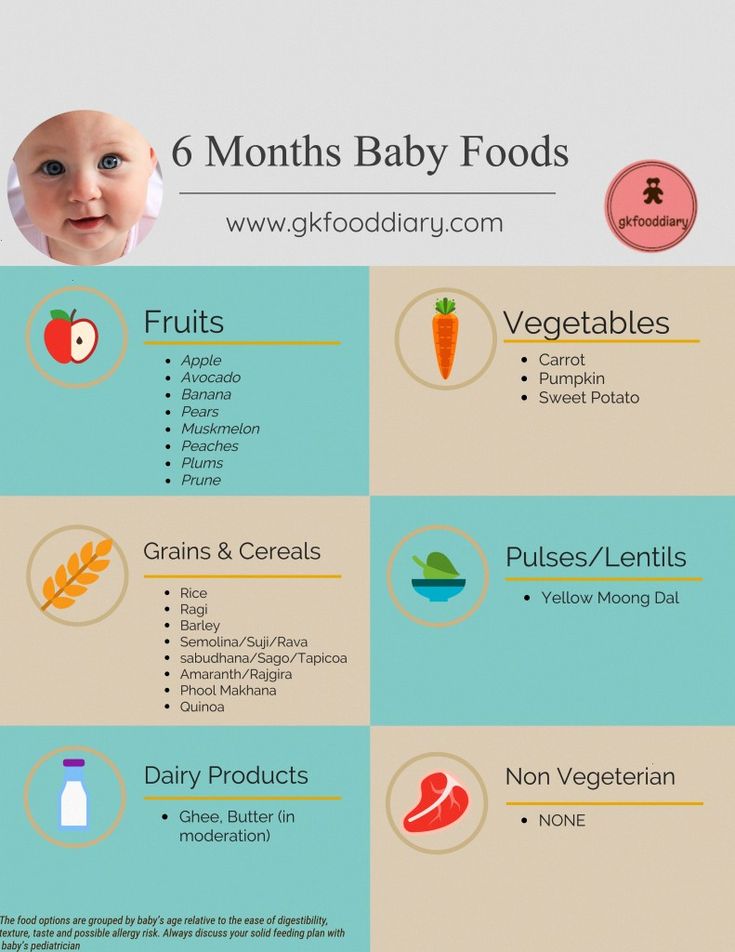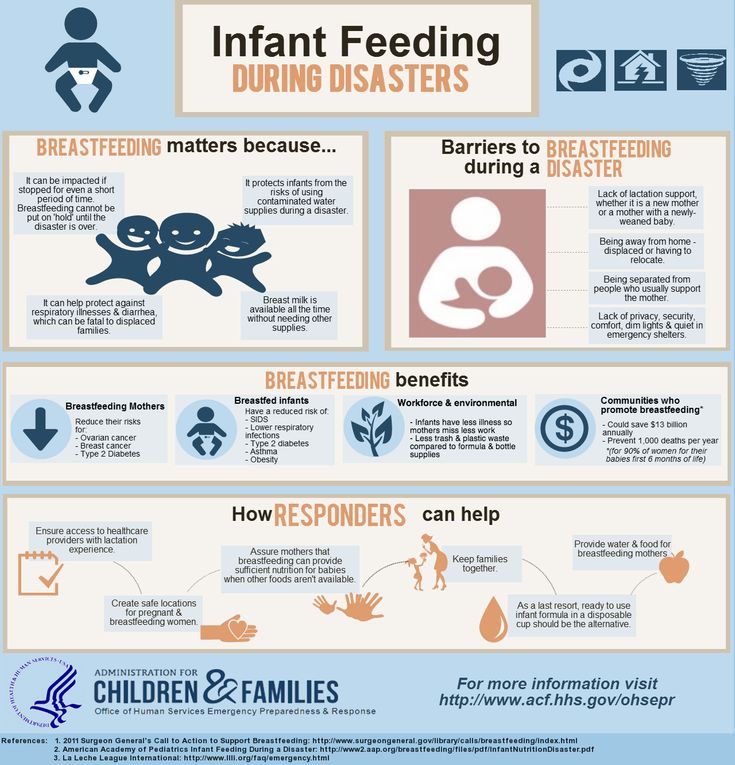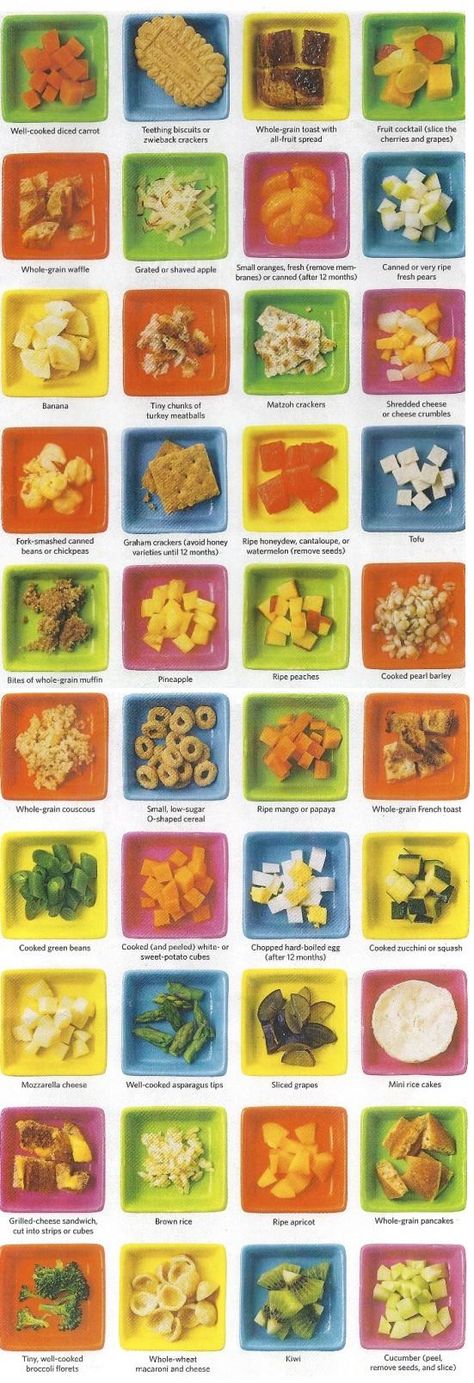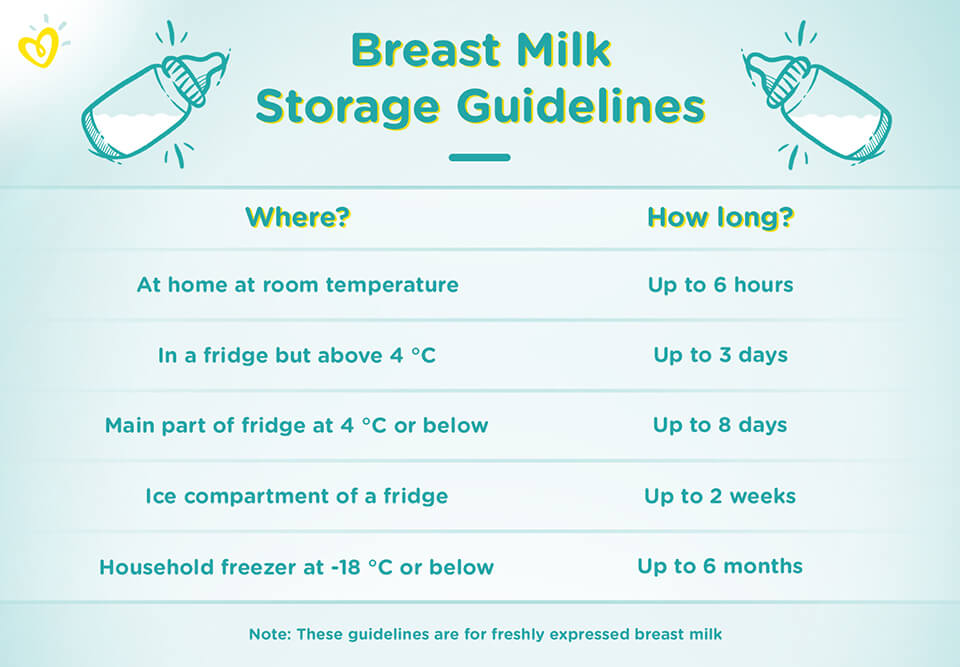Introducing allergenic foods to babies
How to introduce allergy foods
Call triple zero (000) immediately for an ambulance if you think your child is having a reaction to food or drink. They could be having a severe allergic reaction and will need urgent medical attention.
Key facts
- You can start introducing allergy foods when you introduce solids, usually from around 6 months of age.
- Try to introduce common allergy foods before your baby turns one.
- Try one new food at a time, so that you can identify the problem food more easily, if your child has an allergic reaction.
- Symptoms of an allergic reaction include hives, swelling of the face, tummy pain and vomiting.
- Anaphylaxis is a serious, life-threatening allergic reaction. Symptoms include difficulty breathing, tongue or throat swelling and becoming pale and floppy.
What is an allergy food?
An allergy food is a type of food that is harmless to most people but triggers an allergic reaction in some people.
If you have a food allergy, when you come in contact with the food that you’re allergic to, your immune system reacts to it and causes the symptoms of an allergic reaction.
The most common foods that cause allergic reactions are:
- eggs
- cow's milk
- peanuts
- tree nuts (almonds, Brazil nuts, cashew nuts, hazelnuts, macadamia nuts, pecans, pine nuts, pistachios and walnuts)
- sesame
- soy
- shellfish (including prawns, crab and lobster)
- fish
- wheat
- lupin
Are food allergy and food intolerance the same?
Food allergies and food intolerance are not the same.
An allergy involves the body's immune system and can be serious. An intolerance is a reaction that doesn’t involve the immune system. If you have a food intolerance, you may experience unpleasant symptoms after eating the problem food, but you will not have a dangerous reaction.
A doctor can arrange allergy tests to diagnose food allergies. Food intolerances will not show up on these tests.
Food intolerances will not show up on these tests.
How common are food allergies?
Food allergies affect about 1 to 2 in every 20 children. Allergic diseases, including food allergies, have increased in recent years. It’s not fully understood why.
Babies are more likely to develop allergies if there’s a family history of allergic diseases such as eczema, asthma, hayfever or food allergies (known together as ‘atopy’).
Babies with no family history of atopy can also develop allergies, so the recommendations for introducing solids are the same for all families, including families where a parent or sibling has an allergy.
If you already know your baby has an allergic disease, such as severe eczema or food allergy, talk to your doctor before introducing solids.
When should I start giving my baby allergy foods?
You can introduce allergy foods to your baby when you are introducing solids. This is usually from around 6 months of age, but not before your baby is 4 months old. Introduce common allergy foods before your baby reaches 12 months of age, since this may reduce their chance of developing an allergy.
Introduce common allergy foods before your baby reaches 12 months of age, since this may reduce their chance of developing an allergy.
If possible, continue to breastfeed while you are introducing solids, since this may reduce the risk of allergies developing.
If you’re not breastfeeding, you can give your baby a standard cow’s milk based formula. Do not give your baby special hydrolysed infant formula or soy or goat’s milk formula to try to prevent allergy.
The first foods you give your baby should be foods that your family usually eats, even if they are common allergy foods. Try to include foods that contain iron in your baby’s diet. The Infant Feeding and Allergy Prevention Guidelines have been developed by the Australasian Society of Clinical Immunology and Allergy to help guide parents and health professionals on how and when to introduce allergy foods.
Which allergy foods should I introduce first?
Start with the allergy food you would like your baby to try first. Remember that the food should be age-appropriate (smooth, soft foods to start with, then moving to foods with different textures as your baby grows).
Remember that the food should be age-appropriate (smooth, soft foods to start with, then moving to foods with different textures as your baby grows).
A good place to start is with soft foods like a well-cooked egg or smooth peanut butter. Don’t give your baby whole or chopped nuts, since this could cause choking.
How should I introduce allergy foods?
It’s best to try one new allergy food at a time. That way, if your baby has an allergic reaction, it will be easier to identify which food is causing the reaction.
If your baby doesn’t have an allergic reaction to the new food, keep giving it to them about twice a week. An allergy may develop if the food isn’t given on a regular basis after trying it. Mix a small amount of the new food in with your baby’s usual food. If your baby doesn’t have a reaction, you can gradually increase the amount next time.
You can try a new allergy food each day — but remember to keep giving your baby the food once you have introduced it to their regular diet.
If you want to test a type of food before your baby eats it, rub a small amount of the food on the inside of your baby’s lip. If there is no reaction after a few minutes, then your baby can try eating it. Don’t rub food on your baby’s skin. This will not show whether your baby will have an allergic reaction to it.
What time of day should I introduce allergy foods?
Try introducing new allergy foods during daytime meals. That way, if your baby has a reaction, you can monitor them more easily.
What can I do to prevent my baby having a food allergy?
There’s no known way to completely prevent allergies, but there are some things you can do that may lower your baby’s risk:
- Introduce solids from 6 months of age.
- Introduce common allergy foods before your baby turns one.
- If possible, breastfeed your baby until they are at least 6 months old and continue while introducing solids.
- Let your baby get dirty when they play, to expose them to ‘good’ germs.

- Give your baby some safe sun exposure to increase their vitamin D levels.
How can I tell if my baby is having an allergic reaction?
Symptoms of an allergic reaction usually occur within a few minutes, but can take up to 2 hours to develop.
Mild-to-moderate symptoms may include:
- hives or red welts (bumps) on the skin
- swelling of the lips, face or eyelids
- tingling in or around the mouth
- stomach pains
- vomiting
- diarrhoea
If your baby has redness around their mouth, it’s usually not an allergic reaction. Babies have sensitive skin that can be irritated by contact with some foods. If you’re concerned, it’s best to discuss this with your doctor.
More serious symptoms can indicate a severe allergic reaction, known as anaphylaxis. Anaphylaxis is rare, but it is a medical emergency. The symptoms of anaphylaxis may include:
- difficulty breathing or noisy breathing
- swelling of the tongue
- swelling of the throat — this can cause drooling
- hoarse voice
- cough or wheeze
- looking pale
- collapse or going 'floppy'
What should I do if my baby has an allergic reaction?
Anaphylaxis is life threatening. If your baby has any symptoms of anaphylaxis, call triple-zero (000) and ask for an ambulance. If your baby has an injection device containing adrenaline, such as EpiPen Jr or Anapen Junior, give them the injection immediately and call the ambulance.
If your baby has any symptoms of anaphylaxis, call triple-zero (000) and ask for an ambulance. If your baby has an injection device containing adrenaline, such as EpiPen Jr or Anapen Junior, give them the injection immediately and call the ambulance.
Anaphylaxis
- Call triple-zero (000) and ask for an ambulance.
- If your baby has an injection device containing adrenaline, such as EpiPen Jr or Anapen Junior, give them the injection immediately and call the ambulance.
- Lay your baby flat while waiting for the ambulance.
- Your baby can sit if they are having trouble breathing.
- Lay your baby on their side if they’re unconscious or vomiting.
Mild or moderate allergic reaction If your baby has a mild reaction to a certain type of food:
- Stop giving them that food.
- Monitor them for symptoms of anaphylaxis.
- See your doctor for advice and an accurate diagnosis.
What should I do if my baby is diagnosed with a food allergy?
See your doctor for advice and an action plan with instructions about how to treat an allergic reaction if it happens again.
Your doctor might refer you to an allergy specialist who may arrange allergy tests. These tests are specialised and must be interpreted by a specialist doctor. True food allergies can be serious. An accurate diagnosis is important.
Be aware that your baby could have a more serious reaction the second time they’re exposed to the food they’re allergic to.
Don’t be tempted to experiment by cutting out a major food, such as milk or wheat, without guidance from a health professional. This could lead to your child not getting the nutrients they need.
If your child needs to avoid certain foods, you can speak with a dietitian to make sure your baby still gets everything they need for their growth and development.
Will my baby grow out of their food allergy?
Many children grow out of some food allergies, although others may continue to be affected throughout their life.
Most children will outgrow allergies to milk, soy, wheat or eggs. Allergies to peanuts, tree nuts, sesame and seafood are most likely to last for life.
Resources and support
'Nip Allergies in the Bub' is an initiative from the National Allergy Strategy that has information for both parents and health professionals.
Learn more here about the development and quality assurance of healthdirect content.
Introducing Allergens to Baby - Solid Starts
In 2015, a groundbreaking study demonstrated that the early introduction of peanuts to at-risk babies could reduce the risk of developing peanut allergy by as much as 81%. In other words, delaying the introduction of common allergens may increase the likelihood of allergies developing.1 As such, allergists and medical institutions now recommend introducing allergens before a baby’s first birthday.2
Just starting solids? See our guides on starting solids and check out our virtual course.
Is my baby at risk of food allergies?
Before introducing major food allergens, it’s important to know if your baby is at risk of developing food allergies. A food allergy can develop at any point in a person’s life, but there are certain risk factors that you can identify early in a baby’s life.
A food allergy can develop at any point in a person’s life, but there are certain risk factors that you can identify early in a baby’s life.
- If your baby has severe eczema, which tends to present as dry, itchy patches on the skin, they may be at an increased risk of developing food allergies.3
- If your baby has a sensitivity or allergy to another food, such as milk or eggs, they have a higher risk of developing food allergies.4
If your baby has any of the above risk factors, it would be wise to work with a pediatric allergist early on in your solid food journey. Otherwise, aim to introduce the common food allergens between 6 and 12 months of age.
Although it was previously believed that a family history of food allergies might predispose a baby to food allergy themselves, the consensus has since shifted. Allergy specialists now recommend that siblings of children with food allergies can introduce common food allergens at home without any pre-testing if they are not at high risk due to severe eczema or another pre-existing food allergy. However, if this is anxiety-provoking, discuss allergen introduction under medical supervision with the child’s healthcare team.
However, if this is anxiety-provoking, discuss allergen introduction under medical supervision with the child’s healthcare team.
Introducing allergenic foods to babies
Introducing food allergens doesn’t have to be terrifying. You can start with a scant amount of the allergen to minimize any possible reaction and slowly work up to larger servings. If you are very anxious to introduce allergens to your baby, make an appointment with a pediatric allergist to discuss the possibility of pursuing a supervised challenge. Even if allergy testing or an oral challenge isn’t necessary, the allergist can offer valuable counseling and help develop a plan for dietary introduction.
What are the Big 8 allergens?
In the United States, there are currently 8 major food allergens:
- Milk
- Eggs
- Peanut
- Tree Nut (e.g. almond, cashew, macadamia, pecan, walnut, etc.)
- Finned fish (especially cod, halibut, salmon, and tuna)
- Shellfish
- Soy
- Wheat
- (Sesame)
As of January 1, 2023, sesame will be recognized as a common allergen in the U. S.. Note that many allergens on this list are also choking hazards, so be sure to use our free First Foods® database to learn how to modify these foods to make the consistency age-appropriate and safe for baby.
S.. Note that many allergens on this list are also choking hazards, so be sure to use our free First Foods® database to learn how to modify these foods to make the consistency age-appropriate and safe for baby.
Tips for introducing common food allergens to babies
- Start small: The smaller the quantity served, the less severe an allergic reaction may be. Start with scant amounts, such as 1/8 teaspoon of a finely ground nut added to your baby’s bowl of oatmeal. If there is no reaction, try gradually increasing the amount over the next few days until you work your way up to larger amounts. Once you’ve ruled out an allergy to that food, aim to offer it to your baby as frequently as you can, but weekly at minimum.
- Introduce allergens early in the day: Most allergic reactions occur within two hours of ingestion and often within minutes.5 Consider introducing an allergen shortly after waking in the morning or right after a morning nap.
 Introducing the allergen in the morning lets you observe your child during the day ahead; should an allergic reaction occur, it is easier to contact your doctor for guidance. For similar reasons, it is best to introduce allergens at home and when at least one adult can focus their full attention on the baby (without distraction from other children or household activities) for at least two hours afterward.
Introducing the allergen in the morning lets you observe your child during the day ahead; should an allergic reaction occur, it is easier to contact your doctor for guidance. For similar reasons, it is best to introduce allergens at home and when at least one adult can focus their full attention on the baby (without distraction from other children or household activities) for at least two hours afterward.
- One at a time. Introduce one food allergen at a time. This way, if there is a reaction, you’ll know which food was responsible. A few days of daily ingestion is usually enough to establish that a food is well tolerated; don’t be afraid to offer multiple new foods each week. Pick a pace that feels comfortable and enables you to introduce a wide variety of new foods well before your baby’s first birthday. Need help or ideas for introducing allergens and a variety of foods? Check out the First 100 Days Meal Plan for Starting Solids.
- Regular exposure: Once you’ve safely introduced a food allergen to your child, keep that food in regular rotation—ideally offering it to your baby every week, at minimum.
 Not all babies with allergies will react on the first exposure, so it’s important to keep serving sizes small until you are confident there is no allergic reaction.
Not all babies with allergies will react on the first exposure, so it’s important to keep serving sizes small until you are confident there is no allergic reaction.
Fortunately, allergies and OAS are not passed along to baby through mom’s breast milk. In general, concerns about potential food allergies should not discourage parents from offering breast milk, especially since breast milk offers a variety of nutritional and immune-supporting benefits for baby.6 Also, avoiding common food allergens in an effort to prevent food allergies either during pregnancy or when lactating hasn’t been shown to prevent food allergies and is not recommended.7
If I am allergic to a food, how do I introduce that food to baby?It can be nerve-wracking to feed your baby a food to which you are allergic. Rest assured that you are unlikely to experience a serious allergic reaction from simply being in the vicinity of your allergen, or even from handling it. The vast majority of patients with food allergies react only upon ingestion. That said, there are steps you can take to minimize your risk of a reaction. When preparing the food, avoid prolonged skin contact with the allergen. If you are not able to wash your hands promptly afterward, wear gloves. If you have a carpet or rug, make sure you place baby’s high chair over a splat mat or move the high chair to a non-carpeted surface or even consider feeding baby outside. This is also a great time for disposable placemats, plates and utensils.
The vast majority of patients with food allergies react only upon ingestion. That said, there are steps you can take to minimize your risk of a reaction. When preparing the food, avoid prolonged skin contact with the allergen. If you are not able to wash your hands promptly afterward, wear gloves. If you have a carpet or rug, make sure you place baby’s high chair over a splat mat or move the high chair to a non-carpeted surface or even consider feeding baby outside. This is also a great time for disposable placemats, plates and utensils.
When introducing the allergen, consider offering the allergen at the beginning of the meal and immediately following up with another food to which neither you or baby are allergic. This will reduce the allergen content in baby’s saliva. After mealtime, clean baby’s hands and face thoroughly, wipe down the eating surface and chair, and remove baby’s clothing so it can be washed.
Lastly, model a calm demeanor, even if you are nervous at first; children pick up on the anxiety of the adults around them. As feedings continue successfully, it will get easier and become routine. If you feel very nervous, this is an excellent opportunity for a non-allergic parent, caregiver, relative, or friend to spend quality time with baby.
As feedings continue successfully, it will get easier and become routine. If you feel very nervous, this is an excellent opportunity for a non-allergic parent, caregiver, relative, or friend to spend quality time with baby.
Unfortunately, no. If baby has CMPA (Cows Milk Protein Allergy), they can’t have milk or other dairy products, such as yogurt and cheese.8 Goat and sheep milk products are also not recommended.9 Lastly, soy milk and soy-based formulas are generally not recommended either, as CMPA can also entail sensitivities to soy and soy-based products. Remember that research shows the majority of children with cow’s milk allergy will outgrow it by age 6, and many babies with milder symptoms of milk protein allergy (which can show up as painless blood in the stool) are able to successfully reintroduce cow’s milk as early as their first birthday, with the guidance of their doctors. 10
10
If a baby has CMPA, then they also need to avoid milk from other animals, soy milk, and soy-based formulas, since babies with CMPA can also be sensitive to these.11 12 The best options for a baby with CMPA include breast/human milk (from a provider who is avoiding dairy and soy in their diet) or a CMPA-appropriate formula as recommended by your healthcare provider. For toddlers, fortified pea protein or oat milks are also acceptable substitutes. Do note that when compared to cow’s milk, pea protein milk tends to be lower in calories and oat milk is usually lower in protein and can be included as part of a generally balanced diet. For a full comparison of plant-based milks, see our Milk FAQs. Be sure to connect with your pediatric healthcare provider, such as a dietitian/nutritionist, to help identify the best substitute for your child’s individual needs.
Note: Lactose-free formula or milk are not appropriate for a child with CMPA. In CMPA, the natural proteins in milk trigger the allergic reaction, and lactose-free milk still contains these natural proteins (but is free of a natural sugar called lactose).13
Do I need to buy products like SpoonfulOne?
We generally want to see babies and children encouraged to enjoy a wide variety of whole foods, with their associated tastes, smells, and textures intact (as opposed to powders and formula-type products). So for example the vast majority of babies who are not at increased risk of developing a food allergy (see risk factors), we believe that allergen introduction with real, unprocessed foods is the way to go. This aligns with current recommendations that babies who are not at high risk of developing food allergies introduce food allergens into the diet in accordance with family preference and cultural feeding practices.
Anxious for more? See our full guide, Introducing Allergens.
Or check out our video on Introducing Peanuts, one of the most common food allergies in children.
Next up: Symptoms of an Allergic Reaction
Reviewed by:
V. Kalami, MNSP, RD, CSP
R. Ruiz, MD, FAAP. Board-Certified General Pediatrician & Pediatric Gastroenterologist
S. Bajowala, MD, FAAAAI. Board-Certified Allergist & Immunologist
- Fleischer, D. M., Spergel, J. M., Assa’ad, A. H., & Pongracic, J. A. (2013). Primary Prevention of Allergic Disease Through Nutritional Interventions. The Journal of Allergy and Clinical Immunology: In Practice, 1(1), 29–36. https://doi.org/10.1016/j.jaip.2012.09.003
- Learning Early About Peanut Allergy (LEAP). (2022). Food Allergy Research & Education. Retrieved 2022, from https://www.foodallergy.org/resources/learning-early-about-peanut-allergy-leap
- Scientists identify unique subtype of eczema linked to food allergy. (2019, February 20).
 National Institutes of Health (NIH). https://www.nih.gov/news-events/news-releases/scientists-identify-unique-subtype-eczema-linked-food-allergy
National Institutes of Health (NIH). https://www.nih.gov/news-events/news-releases/scientists-identify-unique-subtype-eczema-linked-food-allergy - What Is a Food Allergy? (2022). Food Allergy Research & Education. Retrieved 2022, from https://www.foodallergy.org/resources/what-food-allergy
- Common Questions. (2022). Food Allergy Research & Education. Retrieved 2022, from https://www.foodallergy.org/resources/common-questions
- https://www.jaci-inpractice.org/article/S2213-2198(20)31211-3/fulltext
- https://www.jaci-inpractice.org/article/S2213-2198(20)31211-3/fulltext
- https://gikids.org/digestive-topics/cows-milk-protein-allergy/
- https://www.kidswithfoodallergies.org/food-allergies-and-cross-reactivity.aspx
- https://gikids.org/digestive-topics/cows-milk-protein-allergy/
- https://gikids.org/digestive-topics/cows-milk-protein-allergy/
- https://www.kidswithfoodallergies.org/food-allergies-and-cross-reactivity.
 aspx
aspx - https://www.healthychildren.org/English/healthy-living/nutrition/Pages/Lactose-Intolerance-in-Children.aspx
The most allergenic foods for a child: what parents need to know order of introduction of complementary foods. So, allergenic foods, the list of which is given in this table: cow's milk, fish, chicken, red fruits and berries, sweets.
Important details
-
Cow's milk, or rather, cow's milk protein is not tolerated by about 80% of children under 2 years of age. The reason is the lack of enzymes necessary for its processing. When they form and begin to be produced, and this happens after 2 years, the problem will disappear by itself.
-
Fish is also one of the most dangerous allergens. And for some people, the smell of fish alone can cause an attack of suffocation. It is for this reason that it is introduced into complementary foods very carefully, after 8 months in microscopic doses, and the reaction of the baby is carefully monitored.

-
Eggs, to be exact, egg white. The common belief that quail eggs are not as allergic as chicken eggs is just an opinion. In fact, the reaction to them occurs at about the same frequency as to chicken protein. Conclusion: acquaintance with eggs begins with the yolk. Protein in the diet of a child appears only after the baby is 1 year old.
-
Meat. The risk of allergies is great if the baby tries the chicken. Therefore, complementary foods begin with rabbit meat, turkey and even horse meat. In any case, it is not recommended to give fatty meats and poultry. Meat broths are given to a child only after 1-1.5 years. In this case, the first broth always merges. The bird must be skinned and subcutaneous fat removed.
The first step for parents of an allergic child is to start a food diary. This is a tool that will help control the nutrition of the baby, you can show it to a specialist for whom the collected data will be a good reason for prescribing treatment or therapy. Keeping a regular and accurate diary allows you to identify potential allergens and make a list of foods for which the child has a clear intolerance.
Keeping a regular and accurate diary allows you to identify potential allergens and make a list of foods for which the child has a clear intolerance.
Red fruits and berries
Very young children are best given green vegetables and fruits. So, for example, choose clarified juice from green apples, mash green apples and pears. As for vegetables, the child is first introduced to zucchini, cauliflower and white cabbage.
Sweets
Marmalade and marshmallows are considered the most harmless in terms of allergic reaction and at the same time the most useful. Make sure they are free of artificial flavors and preservatives. You can introduce a child to chocolate no earlier than 3 years. Choose milk chocolates. Acquaintance with citrus and exotic fruits is also better to postpone at least until 3-4 years.
Allergenic foods while breastfeeding
To reduce the risk of developing allergies in infants, a hypoallergenic diet is recommended for breastfeeding mothers. All the products mentioned above should be used carefully and not get carried away with them. If one of the parents has a reaction to one of the products mentioned, it is better to exclude it from the diet of a nursing mother.
All the products mentioned above should be used carefully and not get carried away with them. If one of the parents has a reaction to one of the products mentioned, it is better to exclude it from the diet of a nursing mother.
- Photo
- piotr_malczyk/Getty Images/iStockphoto
Some tricks
The list of allergenic foods for children is very extensive, we have listed only a few of them. But this does not mean that the baby is strictly forbidden to try chocolate, nuts, red apples and chicken. Prohibitions remain only for the time being. From a certain age, the risk of allergies decreases, as the body begins to produce enzymes that facilitate the absorption of a particular product. For most allergenic foods, the threshold is 3 years of age. By the age of 3, the child's digestive system will get stronger in order to easily process the substances contained in a certain product.
The safest, including in terms of the risk of allergies, are cooking methods such as boiling, stewing, baking and steaming.
Is honey allergenic?
The answer is unambiguous: yes. If a person is allergic to plant pollen, then its presence, even in minimal amounts, can cause big trouble. In honey, as you know, pollen is present in very large quantities. A child can be introduced to honey only after 3 years. You need to start with microscopic portions and carefully monitor the reaction. At the first sign of trouble, the product is excluded from the diet. The next attempt may take place in two weeks.
Are mushrooms allergenic or not?
Mushrooms, like a sponge, absorb all the harmful substances present in the soil and in the air. And if harmful substances are present in the air and soil, then an allergic reaction may follow after eating mushrooms. In addition, mushrooms are almost pure protein, which in itself is the strongest allergen. Therefore, you can give a child a try of mushrooms only after 5 years. Some nutritionists advise postponing mushroom tasting until the age of 7.
Some nutritionists advise postponing mushroom tasting until the age of 7.
More useful materials about the safety and health of children - in our channel on Yandex.Zen.
Lyubov Prishlaya
Today they read
How the children of the cook Ivlev live and what they do from their first marriage
How to speed up childbirth naturally: 7 proven ways
“My father is not guilty of anything”: how did the fate of his wife and children of the famous maniac Chikatilo
Online broadcast and funeral at sunset: 8 features of the burial of Elizabeth II
Masturbation during pregnancy: 6 pluses and 3 prohibitions
Food allergies | Tervisliku toitumise informatsioon
Although people have suffered from allergic diseases since very ancient times, allergies became a serious problem in the second half of the 20th century. A food allergy is an inadequate immune response to a food.
Nature and incidence of the disease
Allergy is a hypersensitivity reaction triggered by specific immune mechanisms. Allergy is the clinical manifestation of allergic symptoms.
Allergy is the clinical manifestation of allergic symptoms.
Allergens are substances that cause an allergic reaction. The most common allergens are proteins. The reaction to an allergen can be of an immediate type, in which case it is relatively easy to detect, or of a delayed type, in which case it may appear hours or days after contact with the allergen. A delayed reaction is relatively difficult to detect.
Why food allergies occur is still unclear. One theory is that vaccination of infants increases the activity of the immune system, but scientific research does not support this theory. Another theory blames early withdrawal from breastfeeding and the proteins found in formulas for artificial feeding of infants. There is also a hygiene hypothesis, according to which everything is too clean, and the immune system is "bored" and "looking for something to do."
Allergies at one age or another affect about 20% of the population, but about 1-2% are constantly suffering from allergies. There are more allergy sufferers in the city than in the countryside. Although allergies can kill people of any age, food allergies primarily affect 90,017 infants, 90,018 and 90,017 preschoolers. Mucous membranes of the digestive canal and respiratory tract in children under the age of one year are not yet fully formed and easily pass foreign proteins.
There are more allergy sufferers in the city than in the countryside. Although allergies can kill people of any age, food allergies primarily affect 90,017 infants, 90,018 and 90,017 preschoolers. Mucous membranes of the digestive canal and respiratory tract in children under the age of one year are not yet fully formed and easily pass foreign proteins.
Hereditary predisposition is very important for the occurrence of food allergies. Families in which one of the children or parents suffer from food allergies are called families at risk .
Cross-allergy - an effect in which allergens with a similar chemical structure reinforce each other's action. Other food allergens, stress, stomach acidity, and other factors can also influence the course of food allergies.
Keeping food allergies under control
The clinical picture of food allergies can be very different. Symptoms can range from very mild to extremely severe, even resulting in death in anaphylactic shock. Clinical manifestations of food allergy occur primarily in the respiratory tract, alimentary canal, and on the skin. Respiratory tract disorders are manifested in sneezing and coughing; the lips, tongue, and base of the tongue may itch and swell. Food allergies can also appear in asthmatic episodes, but are not a common cause of asthma. Skin manifestations are expressed in dermatitis or urticaria. The main disorders of the digestive canal are expressed in vomiting and diarrhea. In the case of infants, they are caused predominantly by an allergy to cow's milk.
Clinical manifestations of food allergy occur primarily in the respiratory tract, alimentary canal, and on the skin. Respiratory tract disorders are manifested in sneezing and coughing; the lips, tongue, and base of the tongue may itch and swell. Food allergies can also appear in asthmatic episodes, but are not a common cause of asthma. Skin manifestations are expressed in dermatitis or urticaria. The main disorders of the digestive canal are expressed in vomiting and diarrhea. In the case of infants, they are caused predominantly by an allergy to cow's milk.
A pregnant woman should eat a varied diet to provide the body with all the necessary nutrients. Alcohol, drugs, food additives, preservatives are absorbed into breast milk. Therefore, a nursing mother should be especially careful in choosing products. Scientific evidence for an association between infant nutrition and allergic manifestations is conflicting. In general, it is still believed that breast milk may provide some protection. Research shows that among high-risk populations, early exposure to new foods reduces the risk of atopic asthma and other allergic diseases. However, it is unclear whether this is due to the infant's age or exposure to new foods while breastfeeding plays a protective role against celiac disease when introduced to gluten. There is also evidence that breastfeeding for at least 4 months, compared with cow's milk formula, delays or reduces the onset of atopic dermatitis and cow's milk allergy in early childhood. Infants The main allergies are milk, eggs, wheat, barley, rice, oats, soybeans, beans, peas, bananas, fish and beef. The main allergens for children of preschool and school age are nuts and almonds. Fruits (peaches, kiwi, apples, etc.) and vegetables (paprika, tomatoes, potatoes, celery, etc.) can also cause allergies. In adults, allergies are often caused by nuts and almonds, as well as spices (pepper, cumin, cinnamon, mustard, etc.
Research shows that among high-risk populations, early exposure to new foods reduces the risk of atopic asthma and other allergic diseases. However, it is unclear whether this is due to the infant's age or exposure to new foods while breastfeeding plays a protective role against celiac disease when introduced to gluten. There is also evidence that breastfeeding for at least 4 months, compared with cow's milk formula, delays or reduces the onset of atopic dermatitis and cow's milk allergy in early childhood. Infants The main allergies are milk, eggs, wheat, barley, rice, oats, soybeans, beans, peas, bananas, fish and beef. The main allergens for children of preschool and school age are nuts and almonds. Fruits (peaches, kiwi, apples, etc.) and vegetables (paprika, tomatoes, potatoes, celery, etc.) can also cause allergies. In adults, allergies are often caused by nuts and almonds, as well as spices (pepper, cumin, cinnamon, mustard, etc. ). If allergic manifestations occur before the age of three, in most cases they disappear later.
Cow's milk allergy kills 0.5-4% of children and usually resolves by school age. There are many proteins in cow's milk, and allergies can be caused by one or more of them. If you are allergic to cow's milk, you need to find substitute products. Soy protein-based breastfeeding formulas are widely available, but about 25% of babies with cow's milk allergy are intolerant of soy protein. By hydrolyzing cow's milk proteins to peptides and amino acids, cow's milk substitutes can be obtained. The lower the molar mass of the hydrolysis products, the more unpleasant the taste of the mixture. The same is true for mixtures based on synthetic amino acids.
In some cases it is sufficient to heat the milk before drinking. This also helps in the case when allergies are caused by thermolabile proteins. Since the chemical composition of goat's and cow's milk is different, substituting cow's milk for goat's may help. If you are allergic to cow's milk, you should avoid all foods containing milk and dairy products, such as butter, cottage cheese and ice cream. To avoid trouble, you should carefully study the composition of the product indicated on the package.
Egg allergy usually begins in early childhood, before the second year of life, and resolves by school age. Most of the allergens contained in the egg are indeed found in the protein, but egg yolk and chicken can also cause allergies. An allergy to chicken eggs in different people manifests itself with different strengths. So, some allergy sufferers can eat boiled eggs, while for others, even being in a room where eggs are beaten causes severe allergies.
Allergic to fish can mean an allergy to eating, cleaning, and even a frying odor. The most common symptoms are skin irritation and gastrointestinal disturbances (vomiting, pain, diarrhea). An allergy to fish can also occur as an allergic reaction of the whole organism, that is, anaphylactic shock. An allergy to fish can also be caused by eating poultry or pigs that have been fed fishmeal. Allergy to fish at an older age does not go away.
Allergies to fruits and vegetables are generally caused by uncooked fruits. Jams, compotes, juices, boiled and frozen vegetables usually do not cause allergies. From fruits, apricots, bananas, kiwi, apples, pears, peaches, exotic fruits (mango, papaya, carambola) most often cause allergies. Among the most dangerous vegetables are paprika, rutabaga, turnips, carrots, beets, and onions. Legumes, especially soy, can also cause allergies. Since soy protein is widely used in the manufacture of sausages and confectionery, people with allergies to soy protein should be especially careful. Soybean oil, on the other hand, does not cause allergies.
With the increase in consumption of nuts and almonds , the number of people allergic to them has also increased. Nut butter has even caused many deaths in the US.









